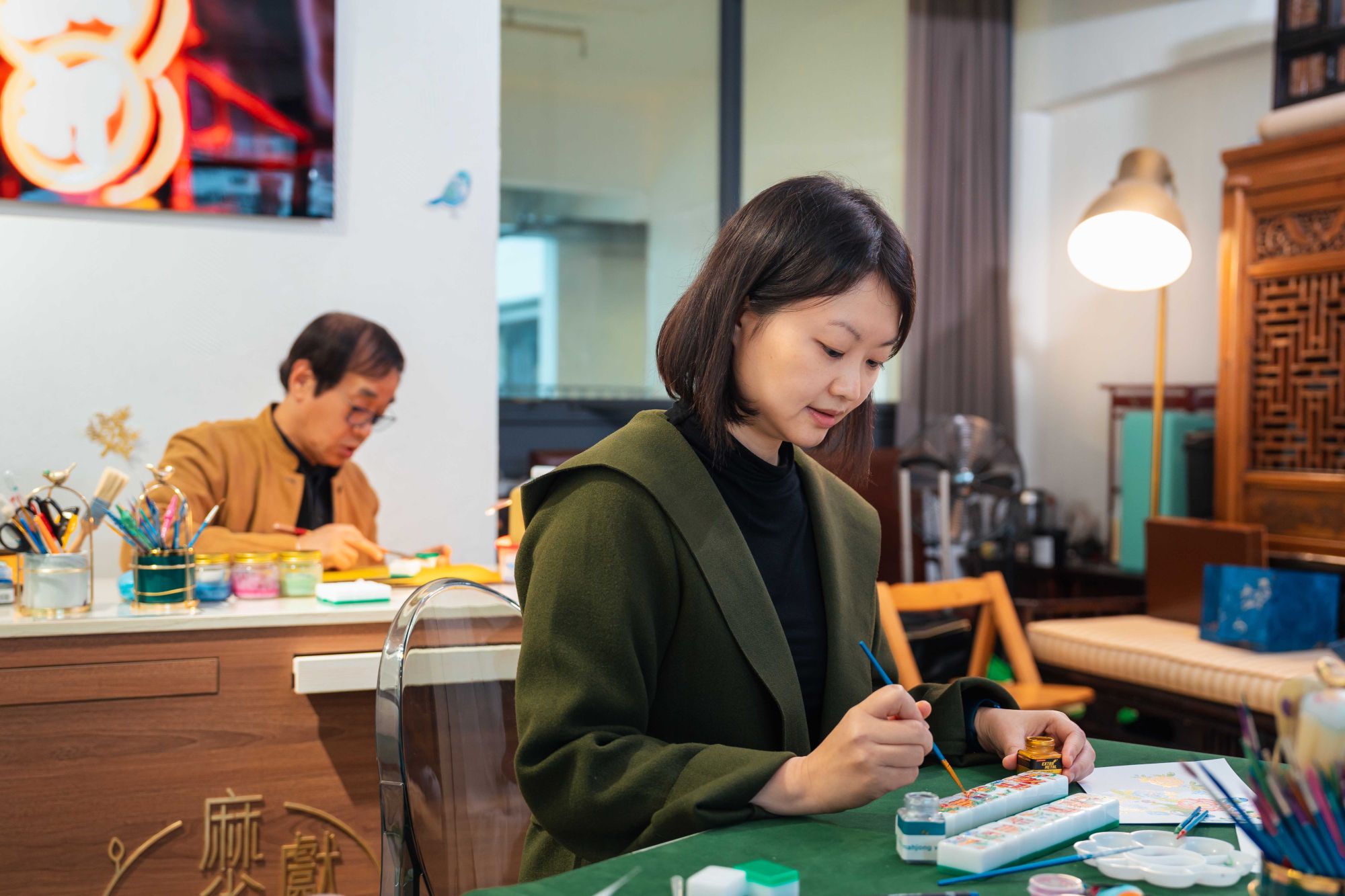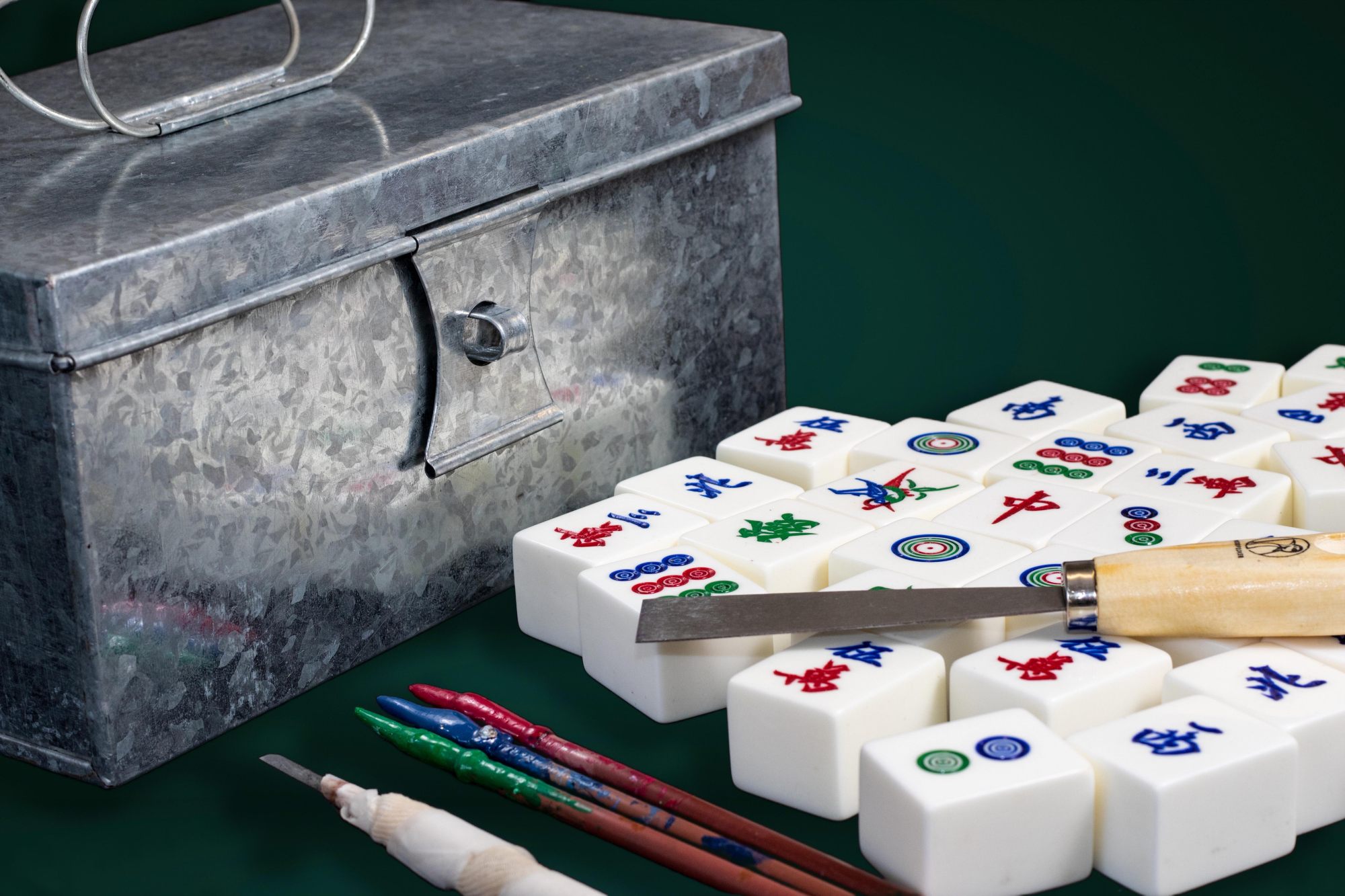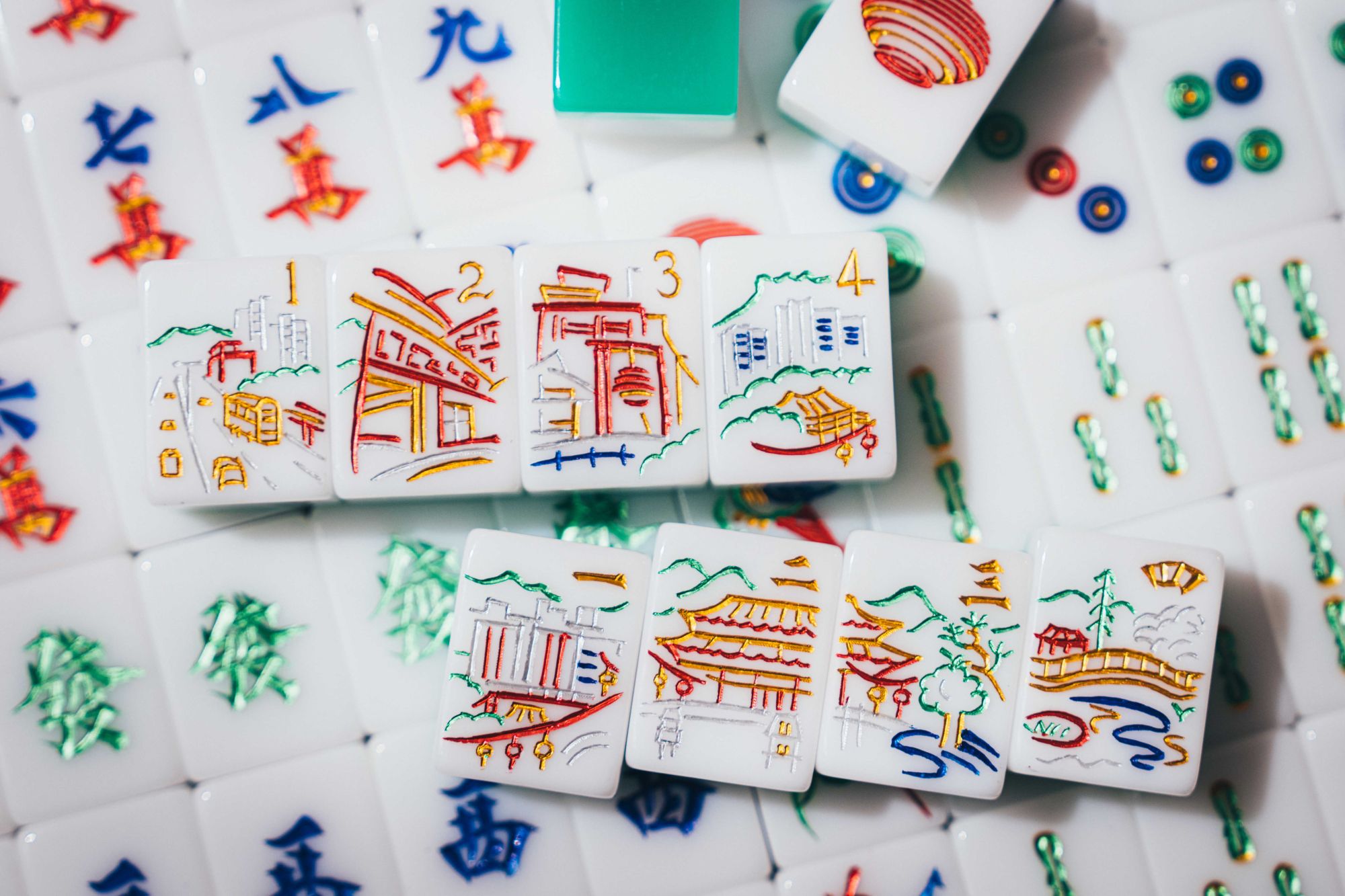
She designs, he carves: Hong Kong father and daughter in generational fight to save dying art of mahjong tile making in city
- Father and daughter team work together to create artistically pleasing modern-day mahjong tiles
- Their aim is to preserve a tradition which has been intrinsic to their family, and the city, for many decades
Mahjong – the traditional tile-based Chinese table game that gathers four players around a square table – has long been a favourite pastime for Hongkongers.
Popular during festivals such as Lunar New Year, it is considered a symbol of family bonds.
But for Hong Kong father and daughter Ricky Cheung Sing-chung and Karen Aruba, it is more than a game - it is a way of life.
Cheung is one of the few remaining masters of hand-carved mahjong tiles in the city. He started when he was 13 years old and has spent 50 years perfecting his craft.

But what makes this story special is his collaboration with Aruba who designs and hand paints the tiles, the illustrator giving each piece a modern spin to appeal to a younger generation.
“We’re helping to drive mahjong craftsmanship to become a real signature of Hong Kong culture,” said Aruba, her artist name inspired by the year she spent in Aruba, a Dutch-Caribbean island known as “One Happy Island”.
Now the duo are taking part in “The Art of the Game: Behind Mahjong Tiles”, an exhibition at the Temple Mall in the Kowloon district of Wong Tai Sin until February 5.
The pair’s unique pieces, which capture Hong Kong’s artistry and culture, are on show along with rare century-old mahjong tiles hand-carved out of ox bones and Japanese bamboo tiles that date back to the 1970s.

It is a chance to learn more about the traditional craftsmanship and culture behind the dying art.
In 2014, mahjong tile-making was listed as an intangible cultural heritage in a bid to protect the technique, a designation that was much needed.
After the 1980s, low-cost machines replaced the manual process of carving mahjong tiles while the late 1990s ushered in electronic mahjong tables that automatically shuffled and stacked tiles.
It is not surprising Aruba is on a mission to preserve the tradition. Mahjong is in her blood.
In 1963, Aruba’s grandparents opened the Fuk Hing Lung mahjong factory in Hong Kong’s Kowloon City area, and her father continued the tradition to build it into one of the largest in Hong Kong.

The family lived and worked under the same roof, with Aruba spending days observing her father’s hand-carving skills and the tile-polishing duties of her uncle. They worked hard, 12 hours a day, six days a week.
But the march to modernisation, combined with increased competition from mainland China, took a toll.
Demand dropped and the factory closed in 2009. The family’s spirit of craftsmanship, however, refused to die.
“While the mahjong manufacturing industry is unlikely to come alive again in Hong Kong, we are committed to keeping culture and family ties alive,” said Aruba.
She has immersed herself in mahjong culture and set up a studio where she now creates with her father. Aruba also hosts workshops.
“Each city has hidden treasures in its cultural heritage, arts and craftsmanship but many are underrated or underexposed.
“Although enthusiasm for this game waned as this city modernised, we can reinvent it in another way to preserve the artistic history. Our family story, the unique illustration and beautiful craftsmanship – these are what people value most.”
And forget about conflicts over creative differences. Aruba said the working relationship with her father has strengthened over time.
“Open-mindedness, willingness to embrace challenges, trust, as well as transparent and genuine communication are what we treasure most,” she said.
“We never thought we could collaborate so well and efficiently across two generations.”

